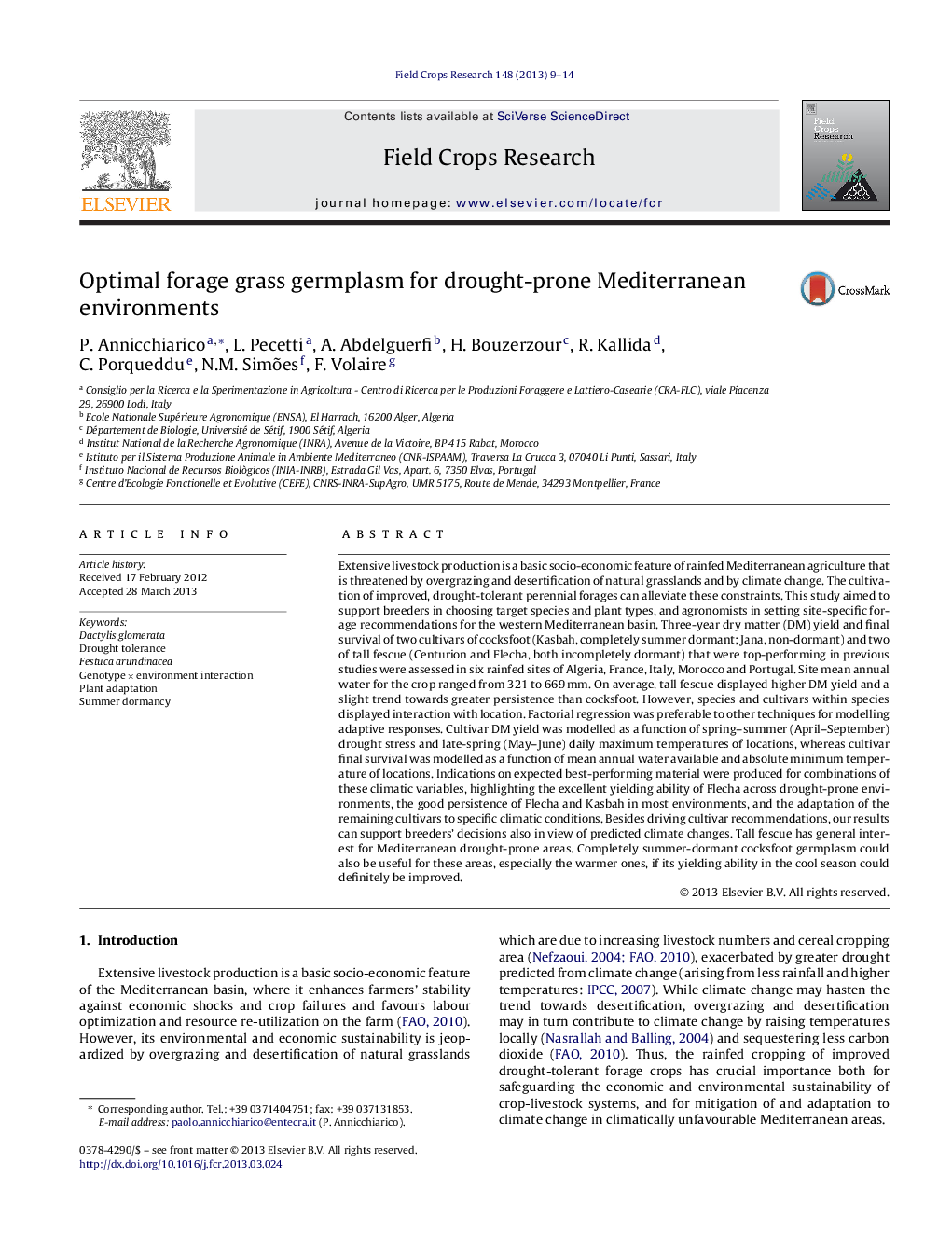| Article ID | Journal | Published Year | Pages | File Type |
|---|---|---|---|---|
| 4510193 | Field Crops Research | 2013 | 6 Pages |
•We assessed yield and persistence of elite grass cultivars across Mediterranean sites.•Cultivar adaptive responses were modelled as a function of relevant climatic variables.•Our results support crop recommendation and breeding, also in view of climate change.•Tall fescue has general interest for Mediterranean drought-prone areas.•Completely summer-dormant cocksfoot with improved yield can be useful in warmer sites.
Extensive livestock production is a basic socio-economic feature of rainfed Mediterranean agriculture that is threatened by overgrazing and desertification of natural grasslands and by climate change. The cultivation of improved, drought-tolerant perennial forages can alleviate these constraints. This study aimed to support breeders in choosing target species and plant types, and agronomists in setting site-specific forage recommendations for the western Mediterranean basin. Three-year dry matter (DM) yield and final survival of two cultivars of cocksfoot (Kasbah, completely summer dormant; Jana, non-dormant) and two of tall fescue (Centurion and Flecha, both incompletely dormant) that were top-performing in previous studies were assessed in six rainfed sites of Algeria, France, Italy, Morocco and Portugal. Site mean annual water for the crop ranged from 321 to 669 mm. On average, tall fescue displayed higher DM yield and a slight trend towards greater persistence than cocksfoot. However, species and cultivars within species displayed interaction with location. Factorial regression was preferable to other techniques for modelling adaptive responses. Cultivar DM yield was modelled as a function of spring–summer (April–September) drought stress and late-spring (May–June) daily maximum temperatures of locations, whereas cultivar final survival was modelled as a function of mean annual water available and absolute minimum temperature of locations. Indications on expected best-performing material were produced for combinations of these climatic variables, highlighting the excellent yielding ability of Flecha across drought-prone environments, the good persistence of Flecha and Kasbah in most environments, and the adaptation of the remaining cultivars to specific climatic conditions. Besides driving cultivar recommendations, our results can support breeders’ decisions also in view of predicted climate changes. Tall fescue has general interest for Mediterranean drought-prone areas. Completely summer-dormant cocksfoot germplasm could also be useful for these areas, especially the warmer ones, if its yielding ability in the cool season could definitely be improved.
